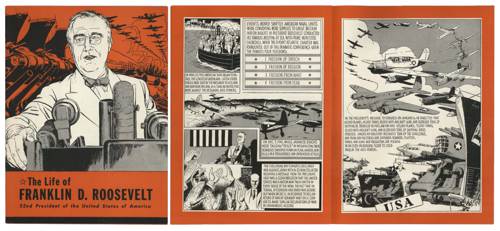
FAQ About The Influence of Biographical Comics on Public Perception

What are biographical comics?
Biographical comics are graphic novels or comic strips that tell the life stories of real people. They combine the art of storytelling with visual illustrations to provide a more engaging and interactive way of learning about historical and contemporary figures. These works often highlight significant events and achievements of their subjects, making history accessible through a visual medium.

How do biographical comics influence public perception?
Biographical comics can significantly influence public perception by presenting nuanced, visually engaging narratives that may challenge or reinforce existing beliefs about a person or historical event. They make complex historical narratives more accessible, often highlighting lesser-known aspects of a person's life, which can contribute to a deeper understanding and revised public opinion.

Why are biographical comics becoming popular?
The popularity of biographical comics can be attributed to their unique combination of visual art and narrative storytelling, which appeals to both adults and younger audiences. They provide an engaging way to learn about historical and influential figures, sparking interest in readers who might not be inclined to pick up traditional biographies. Moreover, the growing recognition of graphic novels as serious literature has contributed to their popularity.

What are some examples of popular biographical comics?
Some popular examples of biographical comics include The Complete Maus by Art Spiegelman, which explores the author's father's experiences during the Holocaust; Persepolis by Marjane Satrapi, which depicts the author's childhood in Iran during and after the Islamic Revolution; and Fun Home by Alison Bechdel, a memoir about her childhood and relationship with her father. These comics provide personal and historical insights through powerful narratives and illustrations.
